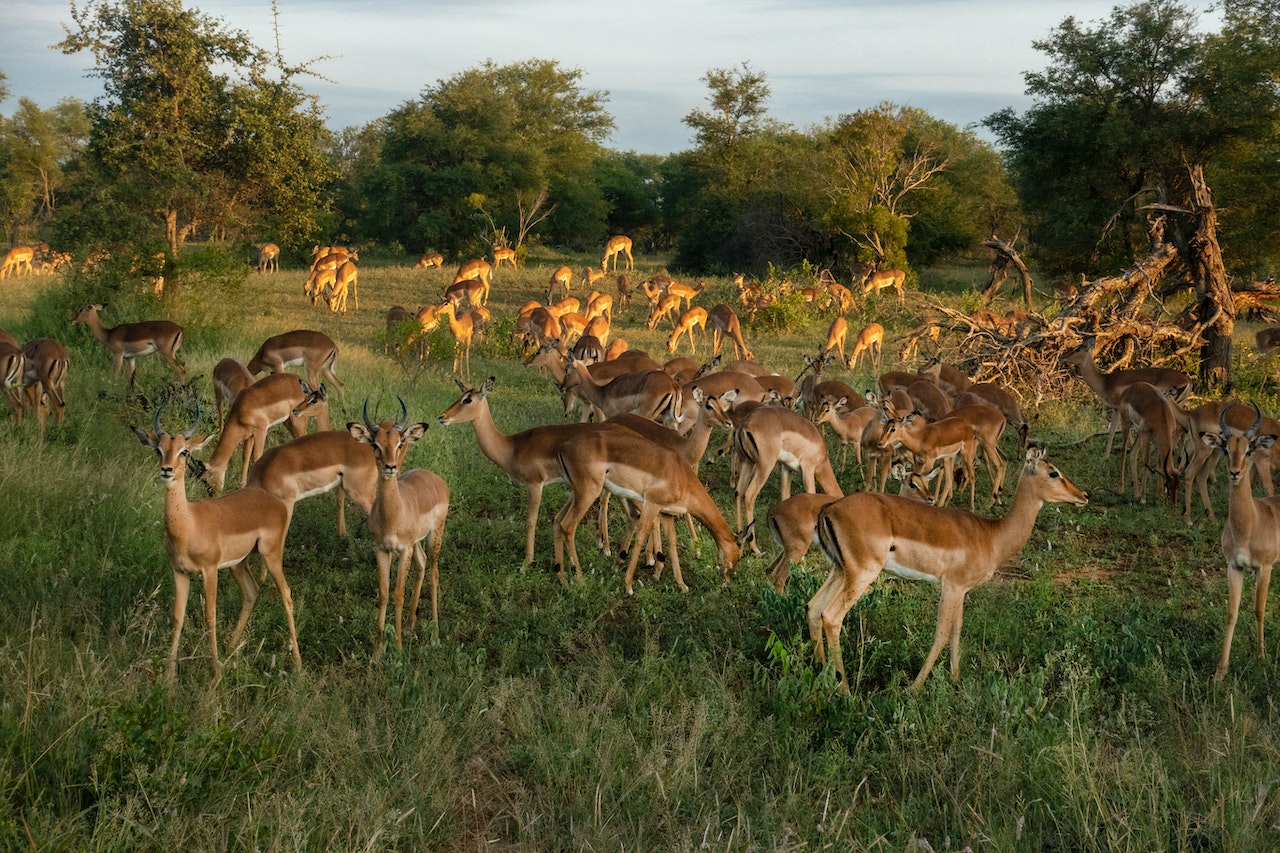By Super Admin - 8 June 2023
How Much Wind is Too Much for Deer Hunting in 2023
Discover the ideal wind conditions for successful deer hunting. Learn how to determine the threshold of wind speed that becomes too much for a fruitful hunting experience.

Deer hunting is a beloved outdoor pastime that attracts numerous enthusiasts. It involves a combination of abilities, including skill, patience, and knowledge of various factors that influence the outcome of a hunt. Among these factors, wind speed and direction play a crucial role. In this comprehensive guide, we will explore the question, "How much wind is too much for deer hunting in 2023" We will examine the impact of wind on deer behavior, identify the ideal wind conditions for hunting, and provide helpful tips for adjusting your hunting strategy according to the wind's influence. So gather your equipment, and let us embark on this exciting hunting expedition shaped by the ever-changing winds!

How Much Wind is Too Much for Deer Hunting?
The wind is really important when you go deer hunting because it can either help you or make things harder. Deer have an amazing sense of smell, but they also have good hearing and eyesight. So, as a hunter, it's important to know when the wind is not on your side which could make it difficult for you to catch a deer.
Factors Affecting the Impact of Wind on Deer Hunting
There are a few things to consider when thinking about how wind affects deer hunting. Let's take a closer look at these factors:
1. Wind Speed and Direction
The speed and direction of the wind are the main things to think about when it comes to how much wind is too much for deer hunting. Wind speed is how fast the air is moving, and wind direction is the way it's blowing. These two things affect how well deer can smell us and notice if something is dangerous.
2. Deer Behavior
Knowing how deer behave is really important for hunting them successfully. Deer are easily frightened animals and they use their senses to spot danger. Wind can have different effects on their behavior. For example, when there are strong gusts of wind, deer become more careful and may look for a safe place to hide or change the way they eat.
3. Terrain and Vegetation
The shape of the land and the plants in the hunting area can change how the wind affects deer hunting. Hills, valleys, and thick plants can make the wind move in different ways, which can make it hard to know how deer will react to it in different parts of the area. It's really important to get to know the specific features of the place where you're hunting.
4. Time of Day and Season
The time of day and the season can also make a difference in how the wind affects deer hunting. Deer are usually more active in the early morning and late afternoon, and the wind can be different during these times. Also, the wind can change depending on the season, so it's important to think about these things when you're planning your hunting trips.
Optimal Wind Conditions for Deer Hunting
There isn't a single answer that fits everyone when it comes to how much wind is too much for deer hunting. However, there are some wind conditions that are usually better for hunting. Here are the best wind conditions to remember:
1. Light and Variable Wind
The best wind for deer hunting is when it's light and keeps changing. Light winds have a speed of 5-15 miles per hour. This kind of wind helps spread your smell around, so deer won't notice you as easily. When the wind keeps changing, it confuses deer because they can't tell where your smell is coming from. This makes it easier for you to stay hidden and quiet while hunting.
2. Steady Winds
Steady winds can help you during deer hunting, especially if they stay the same across the whole area. When the wind keeps blowing steadily in one direction, it confuses the deer and makes it hard for them to figure out if there's danger around. But be careful of sudden bursts of wind called gusts, because they can carry your smell right to the deer and give away your presence.
3. Crosswinds
Crosswinds, which blow sideways in relation to where you are hunting, are usually good for you. They can help hide your smell and make it harder for deer to find you. By positioning yourself smartly about the wind, you can improve your chances of a successful hunt.
4. Thermal Winds
Thermal winds happen when the air gets warmer during the mid-morning or mid-afternoon. These winds can move the air around and take your smell away from the deer. This creates a great chance for hunting because the deer won't be able to detect you easily.
Adapting Your Hunting Strategy Based on Wind Conditions
To increase your chances of success, it's really important to adjust your hunting plan based on the wind conditions. Here are some tips to keep in mind:
1. Scout Your Hunting Area
Before you go hunting, it's a good idea to explore the hunting area carefully. Look for places where deer might sleep, find food, and paths they use to move around. Knowing how deer move each day will help you decide where to position yourself based on the direction of the wind.
2. Use Scent Control Techniques
To make sure deer don't smell you, it's a good idea to use scent control methods. Use soaps, shampoos, and detergents that don't have any scent when you wash your hunting gear and clothes. You can also use sprays that hide any leftover human smell. This way, you'll be less likely to be detected by deer.
3. Play the Wind
When you're hunting, try to position yourself upwind from where you think the deer will be. This means the wind should be blowing from the deer toward you. It helps because the wind will carry your smell away from the deer, so they're less likely to notice you. When you pick your hunting spot, think about the wind direction and adjust where you sit based on that.
4. Utilize Natural Barriers
Make use of natural hiding spots like hills, ridges, or thick plants to hide your smell. These places can create wind patterns and give you cover. Position yourself smartly to take advantage of these natural hiding spots.
5. Be Patient and Flexible
Remember that the wind can change during the day. Be patient and adaptable while hunting. If the wind gets too strong or changes in a bad way, be ready to change where you are or wait for better wind conditions.
6. Monitor Weather Forecasts
Check the weather forecast to know what the wind will be like on your hunting trips. There are apps and websites made for hunting and outdoor activities that can give you helpful information about wind speed and direction in your area.
FAQs
Q1: Can deer smell people when it's windy?
Yes, deer can still smell people even when it's windy because they have a strong sense of smell. But when the wind is in your favor, it helps spread your smell around, making it harder for deer to find you.
Q2: How does wind affect deer during hunting?
When the wind is strong, deer become more careful and may change their eating habits. They might look for shelter or move to areas with less wind. Knowing these changes in behavior can help you adjust your hunting strategy.
Q3: What's the best wind speed for deer hunting?
Wind speeds between 5-15 miles per hour are usually the best for deer hunting. This light wind helps spread your smell evenly and lowers the chance of deer noticing you.
Q4: Does wind direction matter for successful deer hunting?
Yes, wind direction is important for successful deer hunting. By positioning yourself upwind from the deer, you improve your chances of not being detected.
Q5: Are thermal winds good for deer hunting?
Yes, thermal winds can be good for deer hunting. They carry your smell away from the deer, reducing the chances of them detecting you.
Q6: How do scent control techniques help deer hunting?
Using scent-free products and sprays that eliminate odor can greatly reduce the chances of deer smelling you. By minimizing human scent, you increase your chances of a successful hunt.
Conclusion
Understanding the impact of wind on deer hunting is crucial for any avid hunter. By recognizing the optimal wind conditions, adapting your strategy, and using scent control techniques, you can improve your chances of a successful hunt. Remember to pay attention to wind speed, direction, and other factors influencing deer behavior. Happy hunting, and may the wind be in your favor!
what we do
Welcome to Baramdat, your premier destination for an unparalleled online shopping experience. We are more than just an e-commerce platform; we are a thriving marketplace designed to meet the diverse needs of today’s discerning shoppers.